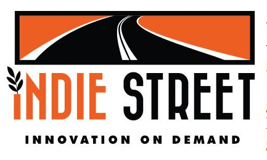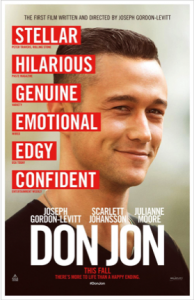by Andrew Einspruch
Filmmaker Andrew Einspruch attended Screen Forever 2013, the conference of Screen Producers Australia, this past year and wrote a series of articles for the event, which he’s kindly allowing us to reprint here. These articles originally appeared in Screen Hub, the daily online newspaper for Australian film and television professionals.
A session at Screen Forever looked at some of the ins and outs of financing a feature film with some amount of money from the USA. Andrew Einspruch reports that success factors range from making sure the Aussie elements of the project work to developing credibility as a producer.
One of the key differences between making a film with a USA-based company versus, say, a Canadian, British or French firm, is there is no official co-production treaty. In fact, co-pro treaties are in place specifically to counter the might of Hollywood.
Even so, plenty of Australian productions have a USA component, and the lack of official co-pros simply means the deals have to stack up on some other basis. These elements were explored in a session called “Working with the USA: the Eagle and the Kangaroo”, moderated by lawyer Craig Emanuel of Loeb & Loeb, and which brought together producer Tony Ginane of FG film Productions, sales agent Clay Epstein of Arclight Films, distributor and EP Greg Coote of Larrikin and China Lion, and Tracey Vieira, representing Ausfilm.
The bad news is that the USA remains difficult terrain. It is still very hard to pre-sell North American rights, and the trend with studios (as reported previously) is they are making fewer, more expensive, mostly tentpole films. This, in turn, puts pressure on North American distribution, and forces projects to get financed without it.


 If you aren’t shooting in 4K (aka Ultra HD or UHD), you’re two years late. In two years from now any film you shot in HD will be as obsolete as the stuff you shot in SD. But don’t take my word for it, and expect that within a few weeks or sooner, there will be new advances announced.
If you aren’t shooting in 4K (aka Ultra HD or UHD), you’re two years late. In two years from now any film you shot in HD will be as obsolete as the stuff you shot in SD. But don’t take my word for it, and expect that within a few weeks or sooner, there will be new advances announced. 
 Walking down Main Street of the Sundance film festival this year, it felt like there was an ever-growing gap between the east and the west side of the street. Hollywood and Independent seem to be growing further and further apart, making the Sundance film festival, and other L.A. hyped festivals like it, such an increasingly awkward phenomena. You have a festival director who wants to keep the slate as Independent, fresh, and intriguing as possible, an audience that attends who has come to expect way more “accessible” stories, and big biz owned media companies like Variety claiming the festival “suffered from too much Brooklyn” and squawking at 2 million dollar advance tags for indie films in today’s market. We feel for you Mr. Redford, we do…but you created this monster, and now it ‘s become a near perfect representation of the dichotomy within the film Industry.
Walking down Main Street of the Sundance film festival this year, it felt like there was an ever-growing gap between the east and the west side of the street. Hollywood and Independent seem to be growing further and further apart, making the Sundance film festival, and other L.A. hyped festivals like it, such an increasingly awkward phenomena. You have a festival director who wants to keep the slate as Independent, fresh, and intriguing as possible, an audience that attends who has come to expect way more “accessible” stories, and big biz owned media companies like Variety claiming the festival “suffered from too much Brooklyn” and squawking at 2 million dollar advance tags for indie films in today’s market. We feel for you Mr. Redford, we do…but you created this monster, and now it ‘s become a near perfect representation of the dichotomy within the film Industry.  It’s important that we understand the basics of what we call the movie poster. The standard movie poster has become a vertical 27” x 40” design originally made to fit inside a theater’s display. [This ignores lobby cards, window cards, the insert, the half-sheet, and the 3 and 6-sheets as well as the European and Asian anomalies.
It’s important that we understand the basics of what we call the movie poster. The standard movie poster has become a vertical 27” x 40” design originally made to fit inside a theater’s display. [This ignores lobby cards, window cards, the insert, the half-sheet, and the 3 and 6-sheets as well as the European and Asian anomalies. 
